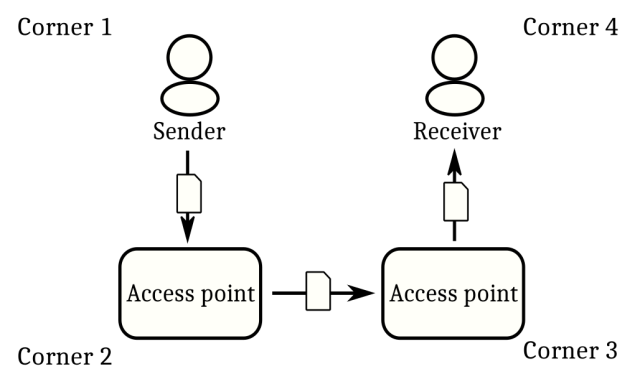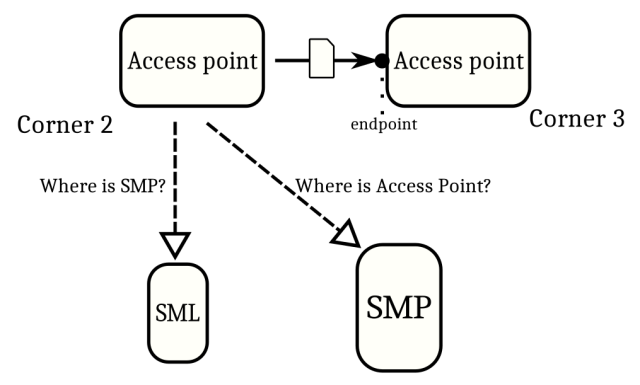The role of an SMP
Service Metadata Publishers (SMPs) play a role in the publication and lookup of trading entities (‘participants’) on the PEPPOL network, by publishing information about where they can be reached, and what electronic business processes and document types they support.
The PEPPOL Network
The Pan-European Public Procurement On-Line (PEPPOL) project is a European project to enable businesses to communicate electronically with each other and with public institutions in Europe in their procurement process.
In order to do that, PEPPOL has defined a number of standards for the exchange of documents, such as orders and invoices. These standards include the formats of these documents and a method to exchange them. Service providers connect to the PEPPOL network on behalf of participants to send and retrieve those documents, and to enable the ERP systems of the participants to process them.
The 4-corner model
The PEPPOL network uses a four corner model:
Say a supplier (corner 1) wishes to send an invoice to a buyer (corner 4). They provide their electronic invoice document to their service provider (corner 2). The service provider then sends it over the PEPPOL network to the service provider of the buyer (corner 3), which in turn delivers it to the buyer.
Determining the service provider
The image in the previous section skips over an important detail: how does corner 2 know which service provider to contact, where they can be reached, and which document types they support? This is where the Service Metadata Providers come into play.
Participants that are connected to the PEPPOL network are published by their service providers in an SMP. This SMP can be operated by the service provider itself, or it can be operated by a third party, such as Ionite.
In the SMP, information about the participant is published: their globally unique identifier(s), such as GLNs or Chamber of Commerce numbers, the document types and business processes they support, and the URL where those documents can be sent, e.g. the endpoint URL(s) of the access point at corner 3.
Based on an identifier of the buyer, for instance a Chamber of Commerce number, the access point at corner 2 first looks up the location of the SMP. This is done in the Service Metadata Locator (SML), a central service operated by the EU. The SML points them to the correct SMP, where they find all the information they need to securely send the document to the service provider of the recipient.

